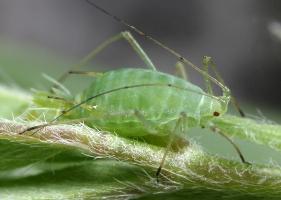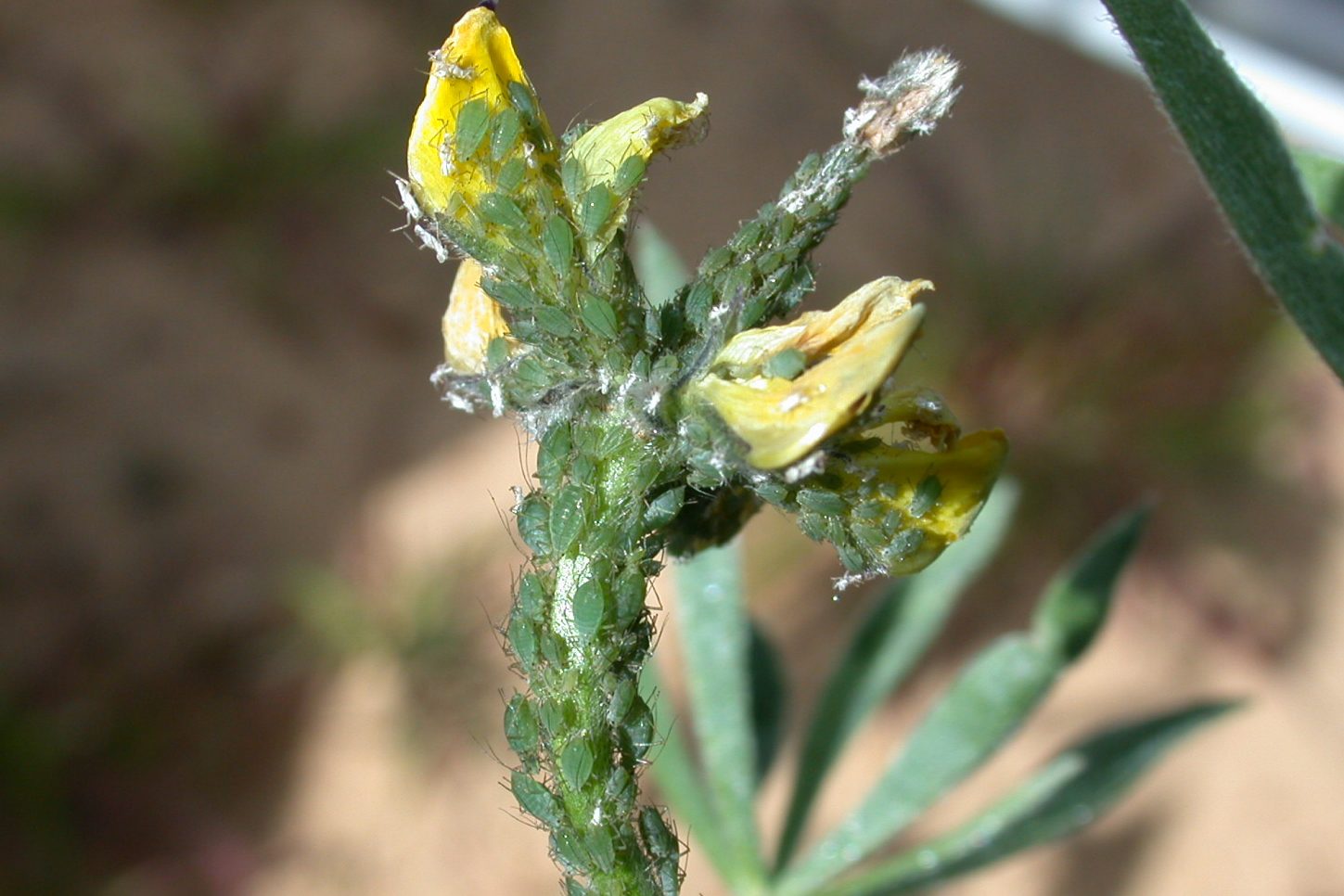Blue Alfalfa Aphid
Acyrthosiphon kondoi
The blue alfalfa aphid looks very similar to the pea aphid, but is slightly smaller, more blue-green in color, and may have a waxy appearance. In contrast, the pea aphid is lighter green and shinier than the blue alfalfa aphid. The third antennal segment of the blue alfalfa aphid is uniformly brown, whereas that of the pea aphid has a narrow dark band at the tip. The thoracic area on the winged forms of the blue alfalfa aphid is dark brown as opposed to light brown on the pea aphid.
|
Adult blue alfalfa aphid. |
Blue alfalfa aphid cluster. |
The blue alfalfa aphid was discovered in California in 1975. Since it became well established, it has spread to Arizona, Nevada, New Mexico, and as far east as Kansas and Oklahoma. Only light infestations have been recorded in Kansas, and serious damage has been rare. Heavy aphid infestations, particularly on pea aphid-resistant varieties, should be identified by an entomologist.
In the Midwest, the blue alfalfa aphid overwinters in the egg stage. As short days and low temperatures cue the development of sexual forms in the fall, egg-laying females glue tiny black eggs to the stems and fallen leaves of alfalfa and clover. Eggs hatch in the early spring and the young nymphs feed on new growth. After one or two parthenogenetic generations, most nymphs mature into winged females that disperse to adjacent alfalfa fields where they start new colonies. The entire life cycle takes about 7 to 10 days at a temperature of 70 °F, each female giving live birth to 50 to 100 nymphs. Large populations can develop in the absence of natural enemies sufficient to exert biocontrol, but populations decline rapidly when daily temperatures reach 85° to 90 °F.
Blue alfalfa aphid prefers to feed on tender, succulent parts of the alfalfa plant that are growing rapidly, so clusters often form on growing terminals, but if populations increase unchecked, they can spread to cover entire plants. Heavily infested alfalfa is characterized by severe stunting of the stems, shortened internodes, and small leaves. Leaves will curl and eventual drop in severely infested fields. Although usually only a patch of the field is affected, heavy infestations have delayed cutting schedules or caused the loss of a full cutting.
Randomly sample at least 20 to 30 stems across a transect of the field and count the number of blue alfalfa aphids per stem, plus all parasitized (mummified) or diseased (brown and flattened) aphids.. Measure the length of each stem and calculate the average number of healthy, diseased and parasitized aphids per stem. Plant stunting will occur at lower infestation densities compared with pea aphids. 20 blue alfalfa aphids per stem on 10-inch-tall alfalfa, or 50 blue alfalfa aphids on 20-inch-tall alfalfa, may justify an insecticide treatment, if diseased and parasitized aphids are scarce. Materials registered for pea aphids may be used to control blue alfalfa aphids.
Please refer to the most recent Alfalfa Insect Management Guide for specific control options.
Page last updated 4/16/2024 by J.P. Michaud.

